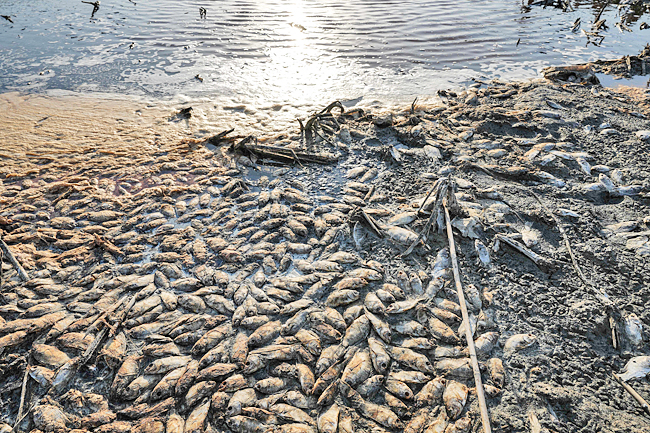CHIBAYISH, IRAQ (AFP) – Mohammed Hamid Nour is only 23, but he is already nostalgic for how Iraq’s Mesopotamian marshes once were before drought dried them up, decimating his herd of water buffaloes.
Even at their centre in Chibayish, only a few expanses of the ancient waterways – home to a Marsh Arab culture that goes back millennia – survive, linked by channels that snake through the reeds.
Pull back further and the water gives way to a parched landscape of bald and cracked earth.
Mohammed has lost three-quarters of his herd to the drought that is now ravaging the marshes for a fourth-consecutive year. It is the worst in 40 years, the United Nations (UN) said this week, describing the situation as alarming with 70 per cent of the marshes devoid of water.
“I beg you Allah, have mercy!” Mohammed implored, the Almighty on his head as he contemplated the disaster under the unforgiving blue of a cloudless sky.
The buffaloes of the marshes produce the milk for the thick clotted geymar cream Iraqis love to have with honey for breakfast.
As the marshes dry out, the water gets salty until it starts killing the buffaloes. Many of Mohammed’s herd died like this, others he was forced to sell before they too perished.
“If the drought continues and the government doesn’t help us, the others will also die,” said the young herder, who has no other income.

Both the Mesopotamian marshes, and the culture of the Marsh Arabs – or Ma’adan – like Mohammed who live in them, have United Nations Educational, Scientific and Cultural Organisation world heritage status. The Ma’adan have hunted and fished there for 5,000 years, building houses from woven reeds on floating reed islands where the Tigris and Euphrates rivers come together before pouring into the Gulf.
Even their beautifully intricate mosques were made of reeds.
But the marshlands have shrunk from 20,000 km2 in the early 1990s to 4,000 square km by latest estimates – choked by dams on the great rivers upstream in Turkiye and Syria and the soaring temperatures of climate change. Only a few thousand of the quarter million Ma’adan who lived in the marshes in the early 1990s remain.
Experts say that Iraq’s management of the waters has not helped.
AFP crisscrossed the central Chibayish marshes at the end of June, where at dawn it was already 35 degrees Centigrade before temperatures shot towards 50.
Iraq is one of the five countries most touched by some effects of climate change, according to the UN. Rainfall is rarer and rarer, and in the next 25 years the World Bank said the temperature will go up by an average of 2.5 degrees.
Water levels in the central marshlands and the Euphrates which feeds it are dropping by half a centimetre a day, said engineer Jassim al-Assadi, of Nature Iraq, the country’s leading conservation group.
That will get worse over the next two months as the temperatures rise and more and more water evaporates, he added.
To draw water for his remaining buffaloes, Mohammed Hamid Nour takes his canoe out into deeper water, where salt levels are lower.
He rolled up his sleeves to fill a water tank on the canoe. He got it for barakah or blessing, he smiled. He needs all the help he can get.
The marshes already almost died once when former dictator Saddam Hussein dried them out so he could hunt down the Shi’ite rebels who had taken refuge there after the failed uprising in the wake of the First Gulf War in 1991.
In a few months, Saddam turned 90 per cent of the marshes into a desert, Assadi recalled.
Most of the Ma’adan fled or moved elsewhere in Iraq or emigrated to Sweden or the United States.
But when Saddam was toppled by the American-led invasion in 2003 the ditches he dug to drain the marshes were destroyed, and both the marshes and the Ma’adan returned.
Two decades later, the water level is plummeting again.






